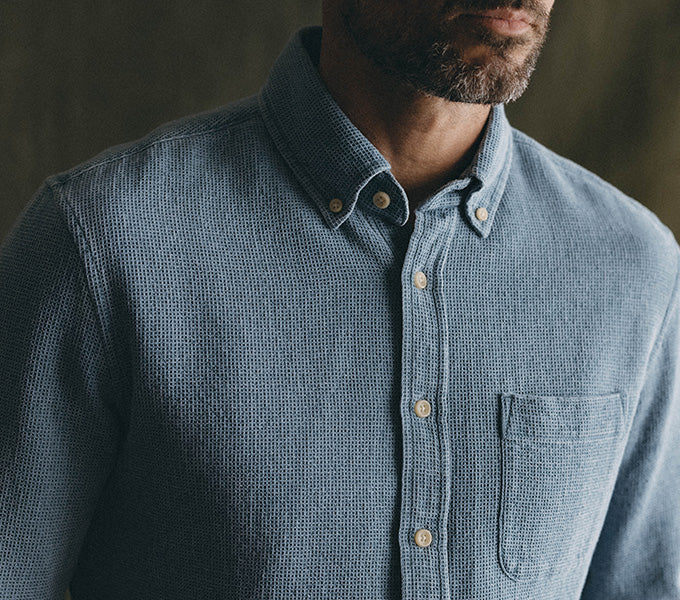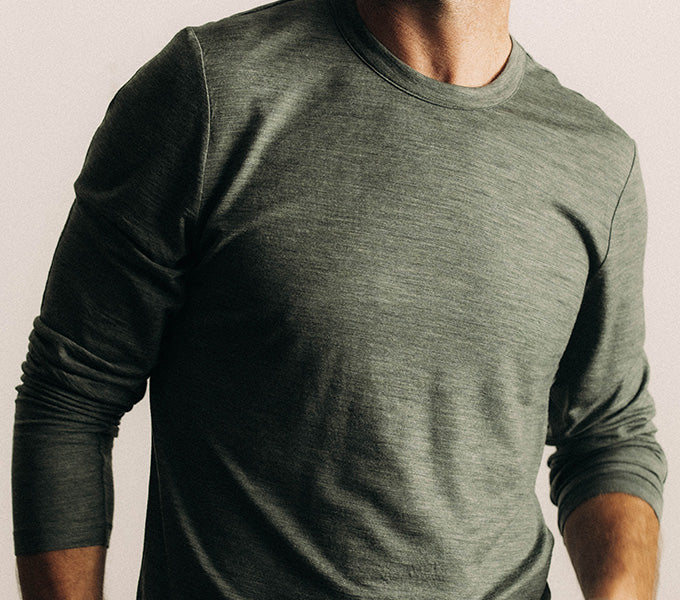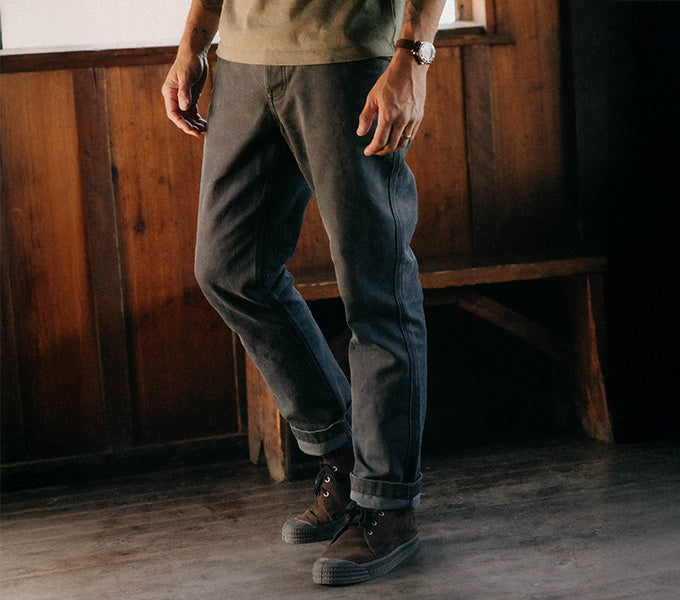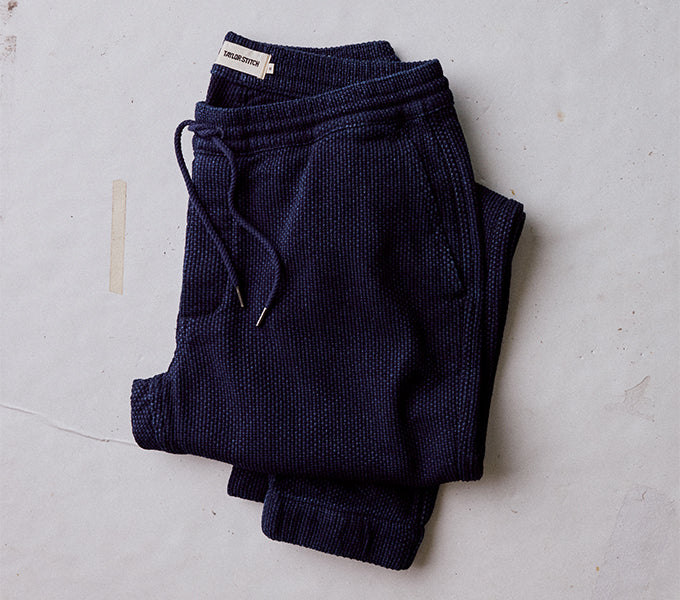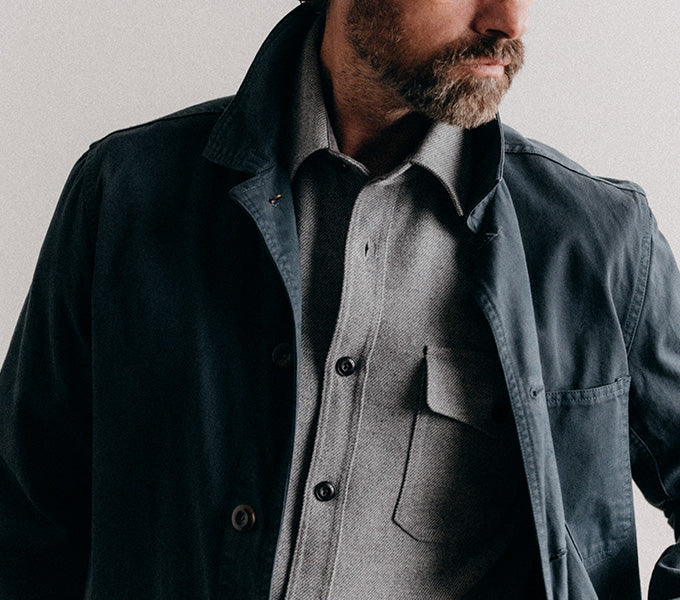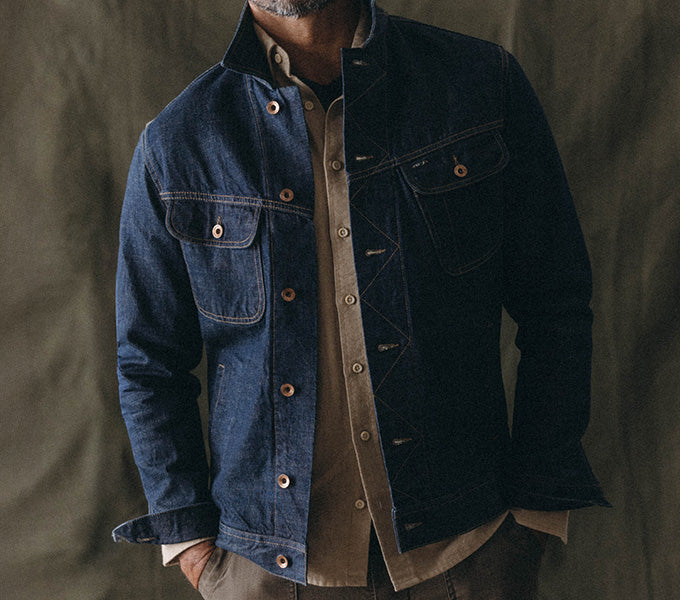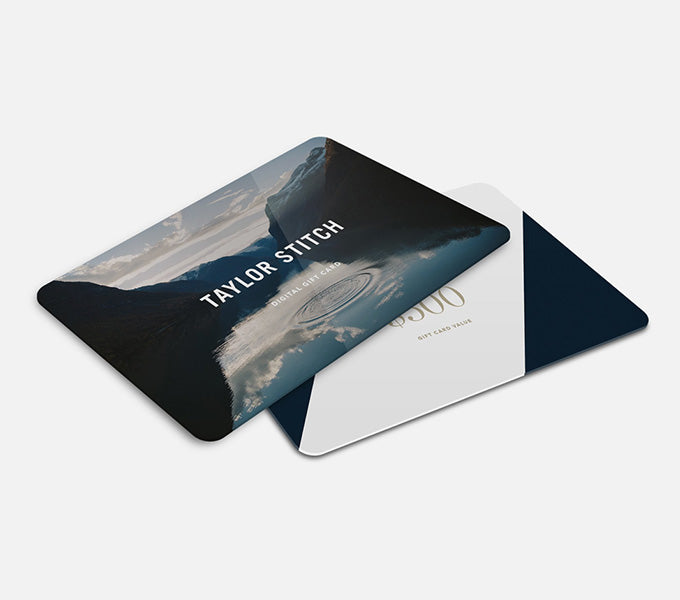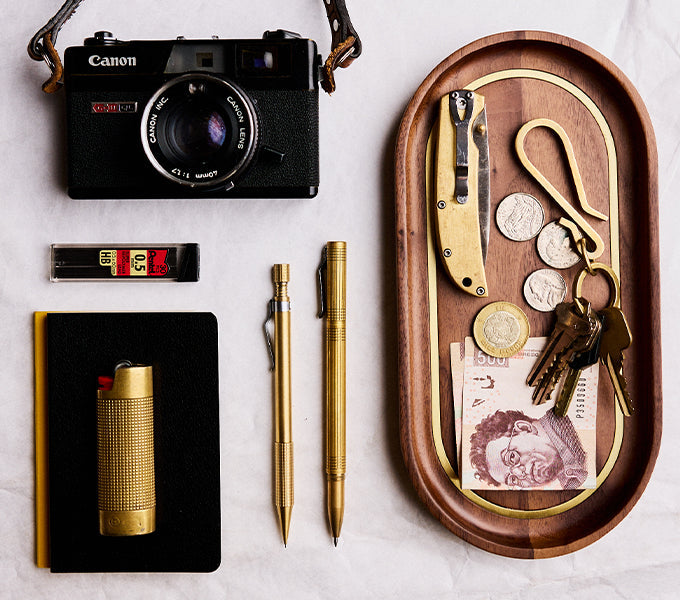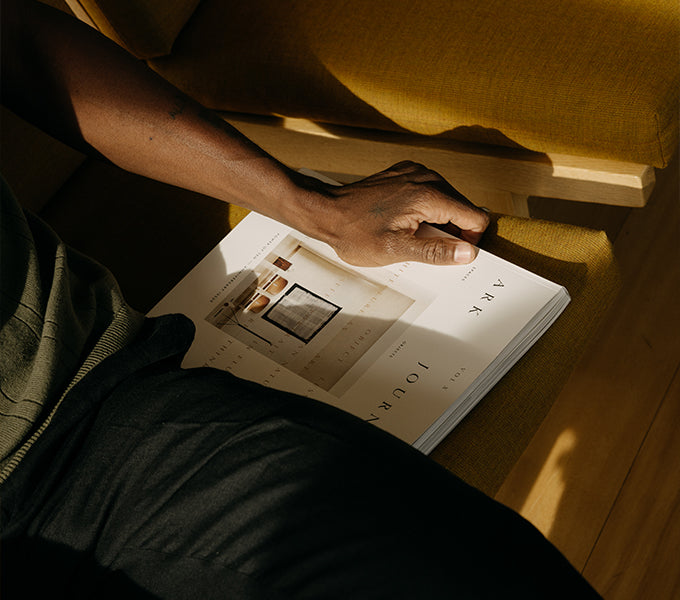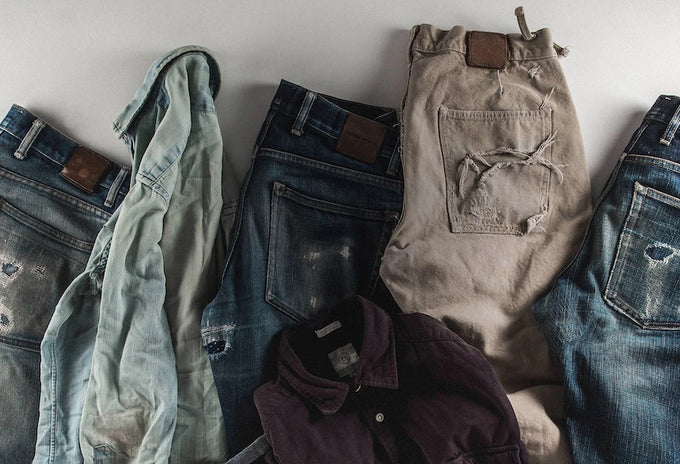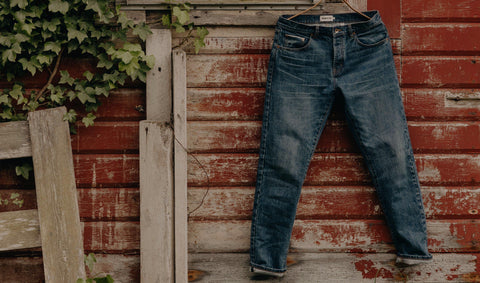Since their advent in 1873, blue jeans have been a ubiquitous staple in wardrobes all across the country and the globe. Worn everywhere, from roping cattle on horseback to roaming the city, jeans are about as versatile, durable, and easy-wearing as pants can get.
But a lot has changed since the heyday of denim. As cheap, fast-fashion jeans flood the market, a lot of us are left searching high and low for the quality craftsmanship that was part and parcel of the denim produced just a few decades ago.
If you’re anything like us, that search for heritage quality has led you into the world of selvedge denim.
Whether you’re just now getting into selvedge denim, need a hand navigating all the complex denim lingo (raw, selvedge, sanforized, shrink-to-fit?), or are a seasoned denim enthusiast looking to expand your knowledge on the subject, this article will provide everything you need to find your perfect pair, take care of them right, and hold your own in talks with even the most experienced of denim heads.
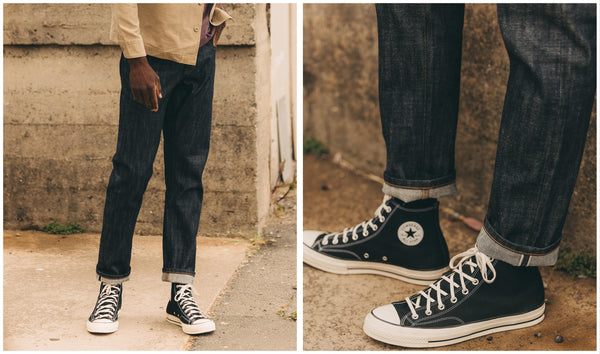
What Is Selvedge Denim?
Before the 1950s, jeans were made on shuttle looms, where a shuttle would move from one edge of the fabric to the other, passing the horizontal “weft” yarns through the vertical “warp” yarns to produce the fabric. This method resulted in a slightly looser weave which gave old-school jeans their rich, slubby texture and left a tightly finished “self-edge” that was resistant to fraying or tearing. The edge of selvedge denim is usually marked with a colored line known as the “selvedge ID” or “selvedge ticker.”
Over time, the term “self-edge” was shortened into the familiar nomenclature of “selvedge” that we use today.
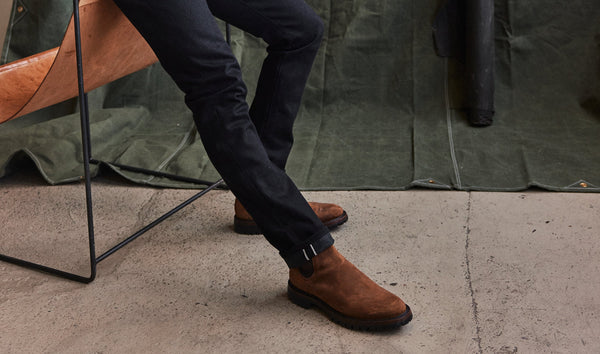
As denim production developed into the 1950s, most manufacturers moved from using shuttle looms to adopting projectile looms, which could produce denim faster and cheaper than their predecessors. Unlike shuttle looms, projectile looms create a more uniform weave pattern and leave a raw edge to the fabric, which is more prone to frays and tears.
The selvedge denim of today is crafted on vintage shuttle looms, harkening back to the quality and character of denim from over seventy-five years ago.
While selvedge denim tends to come at a hefty premium compared to its fast-fashion counterparts, the added cost is, in our opinion, a worthy investment. The promise of selvedge denim’s incredible longevity (lasting years, not seasons) and rich, unique-to-you fades down the line is reason enough to settle for nothing less.
What Is Raw Denim?
“Raw denim” simply refers to denim that has not been washed. While the world of selvedge denim is replete with raw offerings, there are plenty of non-selvedge options out there that are raw. Likewise, there’s a lot of selvedge jeans on the market that are not raw.
It’s important to note that most raw denim, while not washed, is still sanforized. Sanforization is a pressurized treatment given to denim to ensure minimal shrinkage in the wash. Denim that is both raw and un-sanforized is often referred to as “loom state” denim, meaning that it is in the same state as it was when it was pulled off the loom.
If you ever see jeans being sold as “shrink-to-fit,” you’ve got your hands on un-sanforized, raw denim. While some extreme denim heads get a kick out of sliding into a warm bath with their jeans on to get the perfect fit, we think most folks (ourselves included) would rather buy a pair of jeans that are ready to wear right off the rack. So all of our raw denim offerings are sanforized. It also makes sizing a lot easier, as you don’t have to solve a bunch of calculations to try and figure out if your jeans will fit properly after their first wash or not.
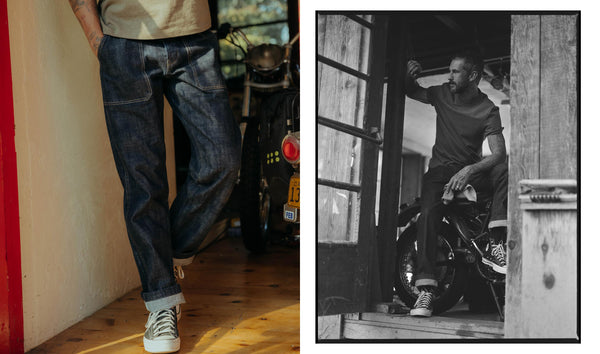
How Should Your Jeans Fit?
While passing trends have seen everything from ultra-baggy to skin-tight fits swing in and out of style, we’re of the opinion that a great pair of jeans should look timeless, be comfortable to wear, and make you feel confident about wearing them. Both of our signature fits follow this design philosophy, offering a classic mid-rise silhouette, with our Slim being a more tailored—but far from skinny—fit and our Democratic providing a little extra room through the thigh. For a deep dive into what Slim and Democratic are all about, check out our comprehensive fit guide.
How To Wear Selvedge Denim
Selvedge denim has been around for almost one hundred years, and over that time, it’s been worn by laborers, cowboys, rock stars, and regular Joes. Few garments are as versatile and timeless as a great pair of jeans, and while you wouldn’t want to wear them to a wedding (unless it’s a Western-themed wedding, of course), they look great with just about anything.
That being said, here are a few of the ways that we like to style our selvedge denim. Just be sure to flip that cuff and show off the ticker.
Easy-Going
Never underestimate the power of pairing selvedge denim with a well-fitting cotton t-shirt. Steve McQueen loved this combination, and today, this classic one-two punch serves as an easy-wearing foundation for any day of the week.
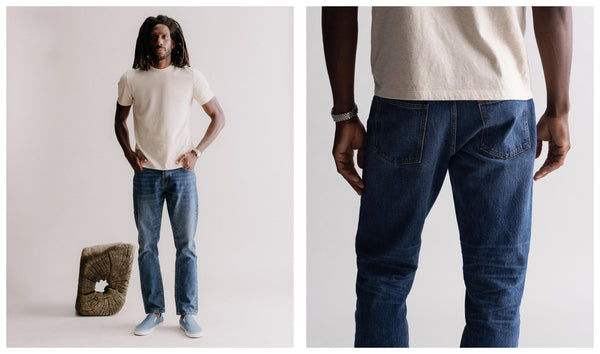
Workwear
Despite its popularity amongst style aficionados, selvage denim jeans were originally created as work clothes, and they’re as up to the job today as they were in the beginning. Pair your selvedge jeans with a flannel shirt, work jacket, or waxed canvas jacket, and finish the look with a solid pair of boots for an outfit that’s as capable as it is timeless.
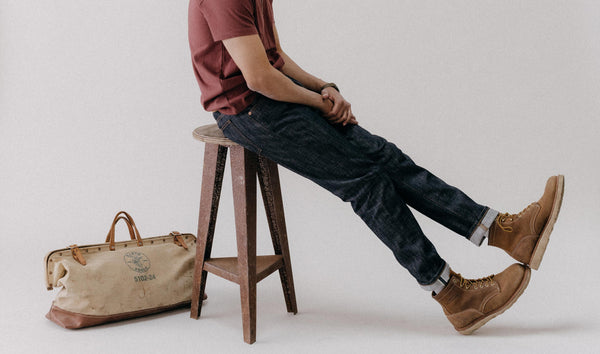
Smart-Casual
While looks like this could have been considered a stretch when our grandparents were struttin’ their stuff, dressing up selvedge denim for a “smart casual” look is a common sight these days. To achieve the style, we recommend starting with dark or unwashed selvedge before adding your favorite sport coat over top. If the occasion leans more formal, go for a tucked-in Oxford shirt and leather shoes, but if you’re just going out for a few drinks with friends, feel free to substitute a heavyweight tee shirt or polo tee and sneakers.
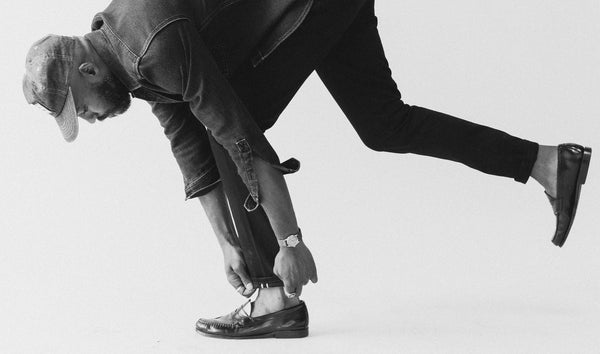
Double-Denim
As a wise man once said, “Don’t knock it till you’ve tried it.” That adage certainly proves true when it comes to rocking a double-denim look. Whether you pair your selvedge jeans with a denim trucker jacket or a lightweight denim shirt, it’s a classic combo that harkens back to the glory days of country music and Western style. And don’t worry, the days of this being called a “Canadian tuxedo” are far behind us.
More Than Jeans
In addition to making up the world’s best jeans, selvedge denim has a long and storied history in jackets—like the iconic trucker jacket—and shirting. Arising out of the rough-and-tumble world of blue-collar labor and Westernwear, these pieces have become an iconic aspect of classic Americana, and they deserve a place in every guy’s wardrobe.
Caring For Selvedge Denim
Like any fine garment, selvedge denim requires proper care to get the most out of your investment. Whether you’re looking to repair them, wash them, or just want to ensure your selvedge denim lasts as long as possible, our handy denim care guide has you covered.


